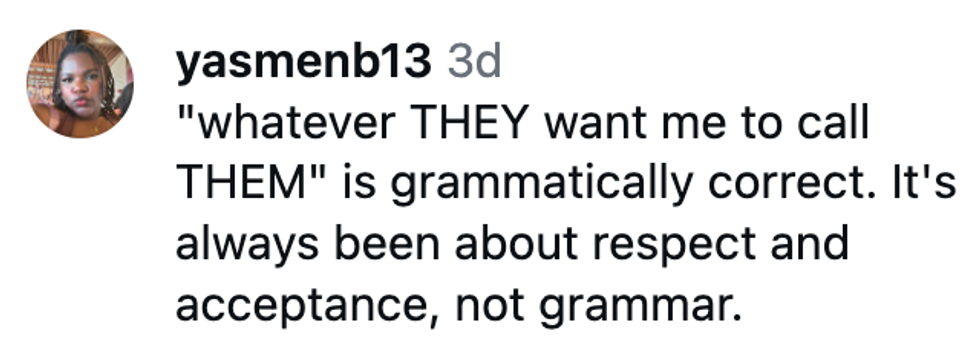The New York Times quickly came under fire for sharing a carbonara recipe so offensive even Italian television news was aghast and dedicated coverage to it.
Carbonara is an Italian pasta dish from Rome made with eggs, hard cheese, cured pork and black pepper.
The cheese is usually Pecorino Romano, Parmigiano-Reggiano or a combination of the two. Spaghetti is the most common pasta, but fettuccine, rigatoni, linguine or bucatini are also used.
Nowhere does the dish include tomatoes or tomato paste—if it did the dish would no longer be a carbonara by any stretch of the imagination—but the newspaper shared a recipe for the pasta sauce that included both tomatoes and tomato paste.
The Times even acknowledged tomatoes "are not traditional in carbonara" but still suggested "they lend a bright tang to the dish."
\u201cTomatoes are not traditional in carbonara, but they lend a bright tang to the dish. https://t.co/WOE8X46LaP\u201d— The New York Times (@The New York Times) 1675036815
Shortly after the newspaper published the recipe, data journalist Federica Cocco shared Italian news program La Vita in Diretta—roughly translated as Live Life—dedicated coverage to the recipe.
\u201cItalian TV currently reporting on Americans adding tomato sauce to carbonara cc @ItalianComments\u201d— Federica Cocco (@Federica Cocco) 1675359511
Indeed, the use of tomato was clearly controversial.

The hosts of the program felt it prudent to educate the Times about the proper way to make carbonara—"NO TOMATO"!
They declared "American cultural hegemony must be nipped in the bud.”
\u201cIt\u2019s still on. \u201cEveryone, this is how you ACTUALLY make carbonara. See? NO TOMATO. American cultural hegemony must be nipped in the bud.\u201d\u201d— Federica Cocco (@Federica Cocco) 1675359511
The issue was so polarizing at one point a panel of six people spent some time criticizing the recipe.
\u201cA panel of six people is now discussing the latest abomination from the US\u201d— Federica Cocco (@Federica Cocco) 1675359511
Many social media users were similarly perturbed.
\u201cTomatoes in Carbonara is a travesty (and NO cream). Spaghetti, guanciale (or thick bacon), eggs, pecorino Romano, and black pepper. That's it, nothing more. "Carbonara" refers to the black pepper not the bacon. https://t.co/cS15GYDS2T\u201d— Kevin Shaw (@Kevin Shaw) 1675372583
\u201cMarshmallows are not traditional in carbonara, but they lend a sweet marshmallow flavor to the dish. https://t.co/n9EmClH1DZ\u201d— Machine Gun Kegel (@Machine Gun Kegel) 1675098845
Great example of how to think outside the box you have to at least know where the box is. pic.twitter.com/y0Zf372fpd
— Andrea Matranga 🇺🇦🌻 (@andreamatranga) February 1, 2023
Reporting this for pasta misinformation. No tomatoes in Spaghetti Carbonara. Adding tomatoes makes it another dish.
— Gabor Gurbacs (@gaborgurbacs) January 30, 2023
Why does the NYTimes think adding eggs to an Amatriciana (made incorrectly without guanciale) makes it a carbonara?
Just say it’s a different dish. There’s also no pecorino, the traditional cheese for carbonara.
Carbonara is a 4 ingredient dish & you’re missing 2! pic.twitter.com/NY6hXNb2XA
— Timothy E Kaldas (@tekaldas) January 30, 2023
this should be illegal pic.twitter.com/w0pKgMy9ip
— Leonardo Puglisi (@Leo_Puglisi6) January 30, 2023
\u201cNow THIS is a balloon that must be stopped...\u201d— Kevin Baron (@Kevin Baron) 1675452951
The New York Times has not responded to the backlash but we hope they've learned a valuable lesson about the merits of authentic cultural cuisine.
If it ain't broke, don't fix it!




























 replying to @elonmusk/X
replying to @elonmusk/X replying to @elonmusk/X
replying to @elonmusk/X replying to @elonmusk/X
replying to @elonmusk/X replying to @elonmusk/X
replying to @elonmusk/X
 Barry Manilow/Facebook
Barry Manilow/Facebook Barry Manilow/Facebook
Barry Manilow/Facebook Barry Manilow/Facebook
Barry Manilow/Facebook Barry Manilow/Facebook
Barry Manilow/Facebook Barry Manilow/Facebook
Barry Manilow/Facebook Barry Manilow/Facebook
Barry Manilow/Facebook Barry Manilow/Facebook
Barry Manilow/Facebook Barry Manilow/Facebook
Barry Manilow/Facebook Barry Manilow/Facebook
Barry Manilow/Facebook Barry Manilow/Facebook
Barry Manilow/Facebook Barry Manilow/Facebook
Barry Manilow/Facebook